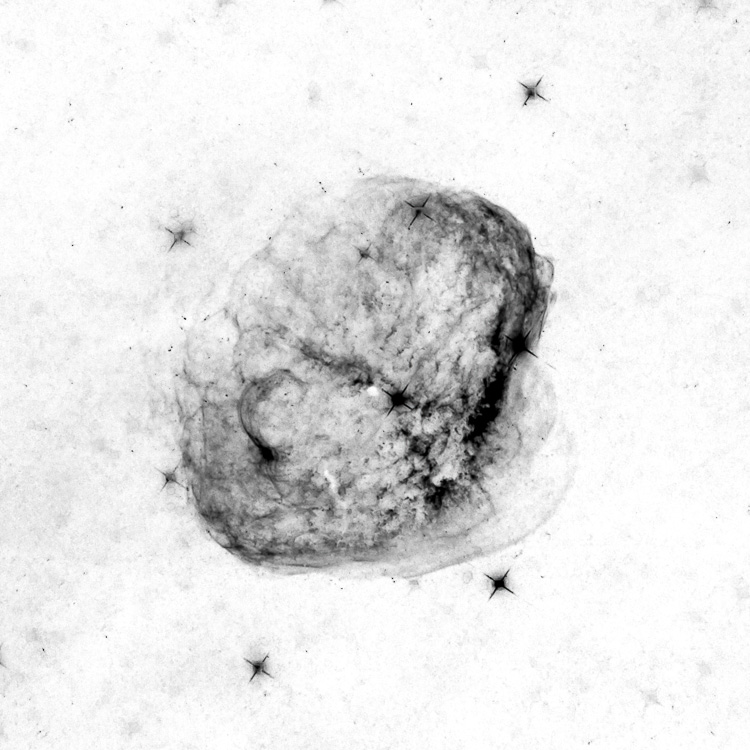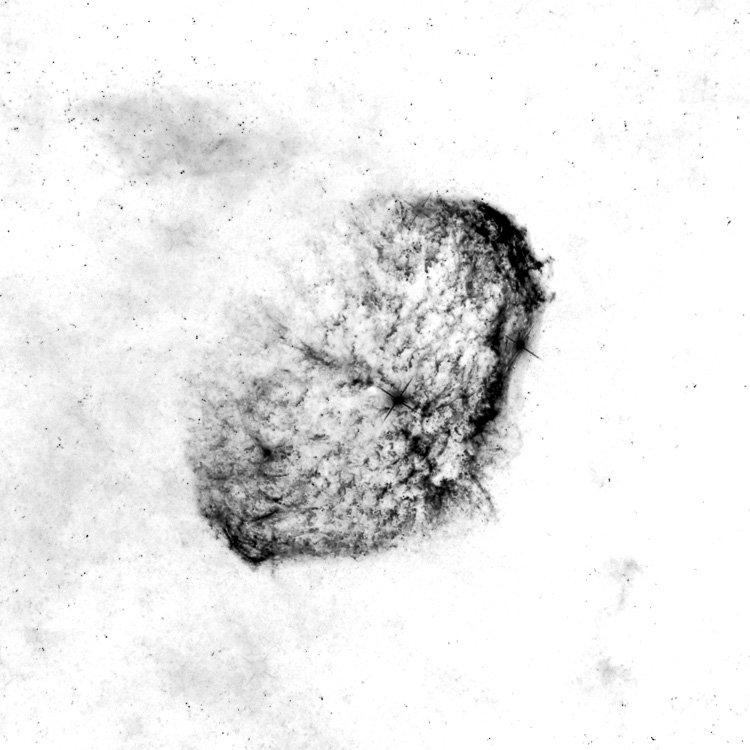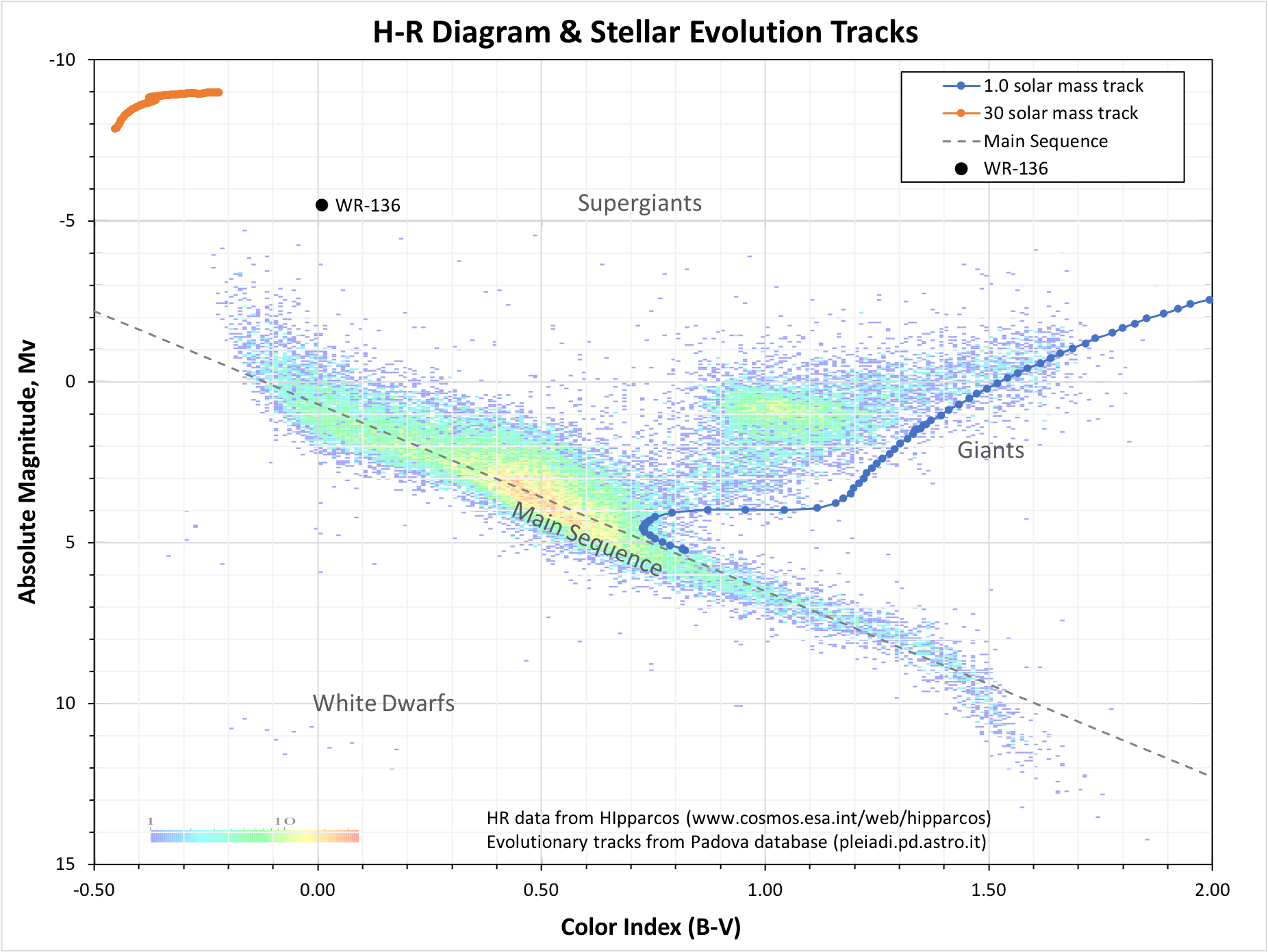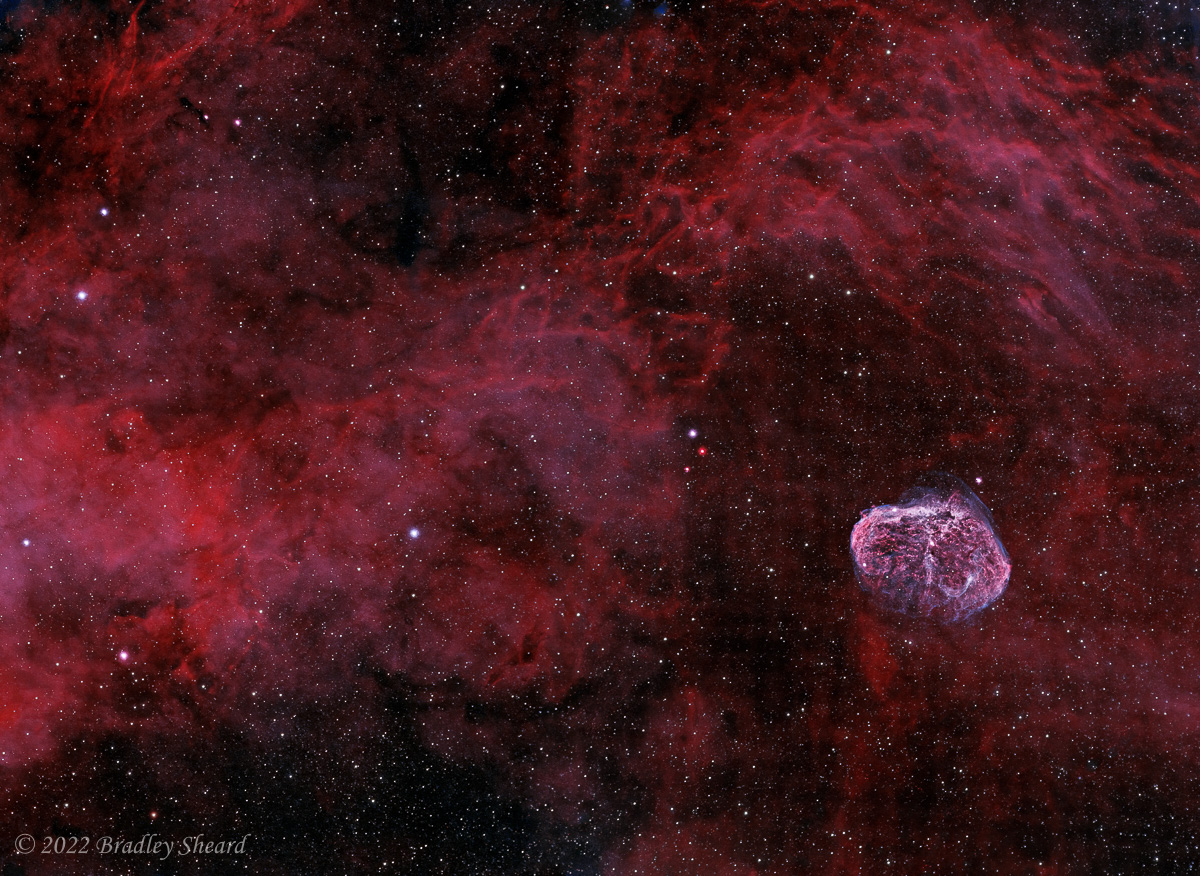Crescent Nebula (NGC 6888) in the Constellation Cygnus | |||
| « Previous | Back to Astrophotography Gallery | » Next | |
The Crescent Nebula (NGC 6888) is an emission nebula lying along the "spine" of the constellation Cygnus the Swan among clouds of hydrogen gas. The nebula itself is an interaction of stellar wind from the hot, massive Wolf-Rayet star (WR 136 / HD192163 / HIP 99546) with gases from its own outer envelope, which was shed during an earlier phase of the star's evolution. Wolf-Rayet (WR) stars represent a late evolutionary phase of very massive stars that occurs after they expand into Red Supergiants (RSG), but before they explode in a type Ia or Ic supernova. The stars are extremely hot (surface temperature > 20,000 K) and display a unique spectral signature, with very strong, broad emission lines of different combinations of helium, nitrogen, carbon and oxygen; the specific combination of lines defines subcategories of WN, WC and WO stars. "Wolf-Rayet stars are thought to be the remains of stars initially more massive than ~30 solar masses that have ejected all or most of their outer envelopes through winds or interactions with companion stars, exposing the hot helium core" (Reference 1). WR 136 is expected to explode as a supernova within a few hundred thousand years. According to Reference 2, the following summary outlines the evolutionary lifetime of a star of approximately 35 solar masses: 1) During its Main Sequence (MS) lifetime, stellar winds sweep out a thin shell or bubble in the interstellar medium. 2) After hydrogen in the core is depleted, the star expands into a Red Supergiant, while its core contracts and begins fusing helium. The star begins shedding its outer envelope via high stellar winds, filling the previously created bubble with its own outer atmosphere. 3) The star enters the Wolf-Rayet phase, with strong, fast Wolf-Rayet (W-R) winds that sweep up the star's previously ejected material, creating shock fronts within the existing bubble. The hot W-R star, which is a strong ultraviolet (UV) emitter due to its high temperature, excites the ejected material creating an emission nebula, often in a ring-formation. This glowing shell of ejected gases forms the Crescent Nebula, NGC 6888, shown here. Following the Wolf-Rayet phase, the star explodes as a supernova. |




